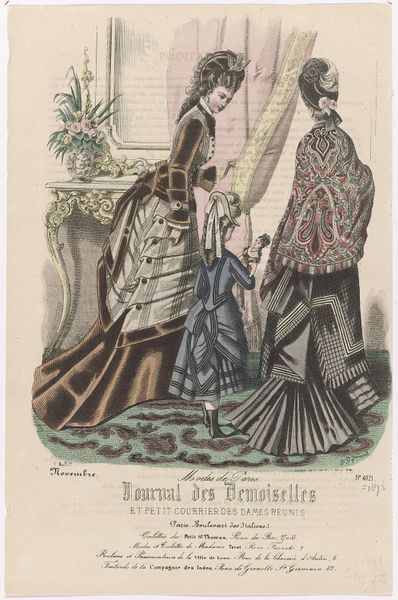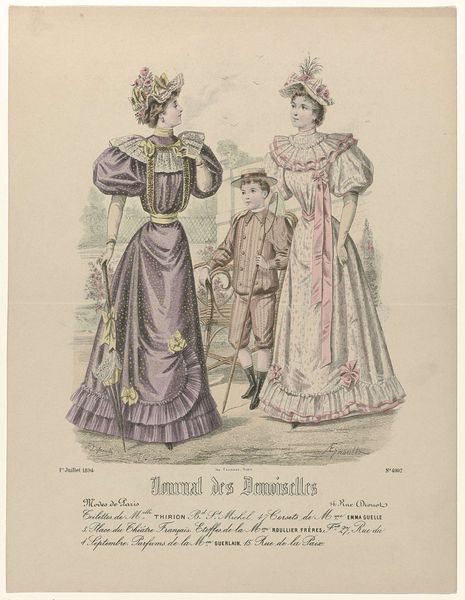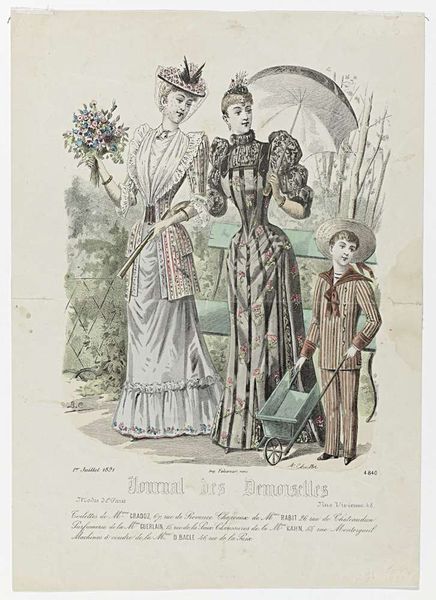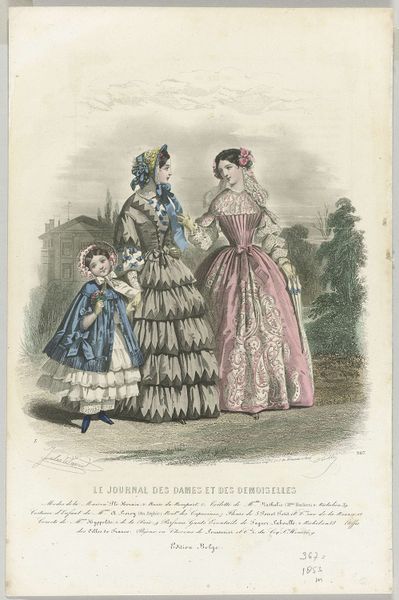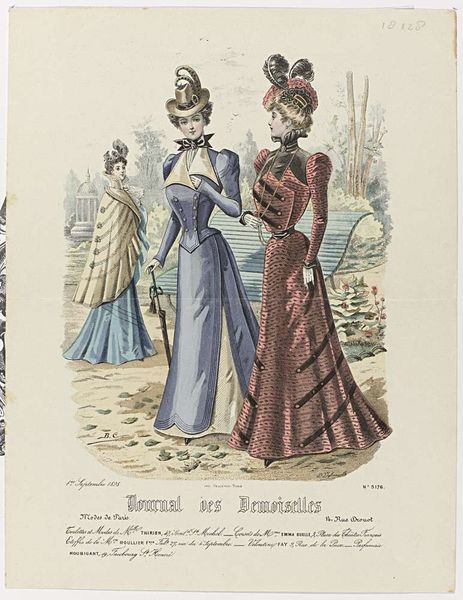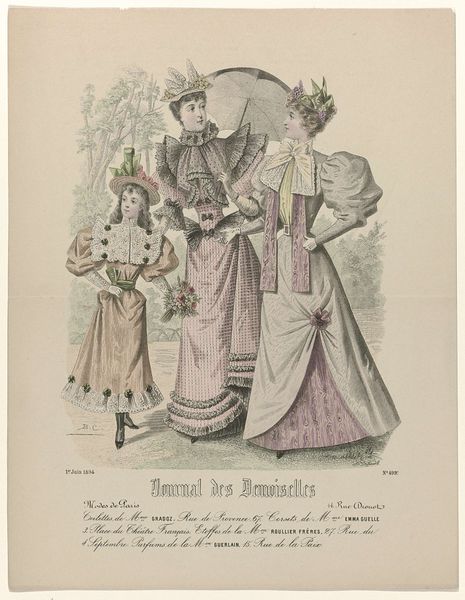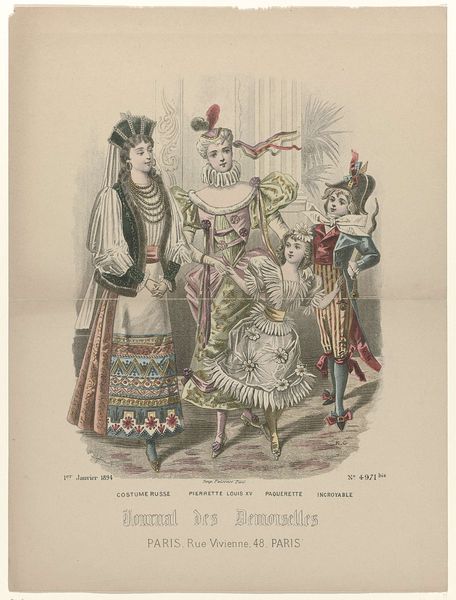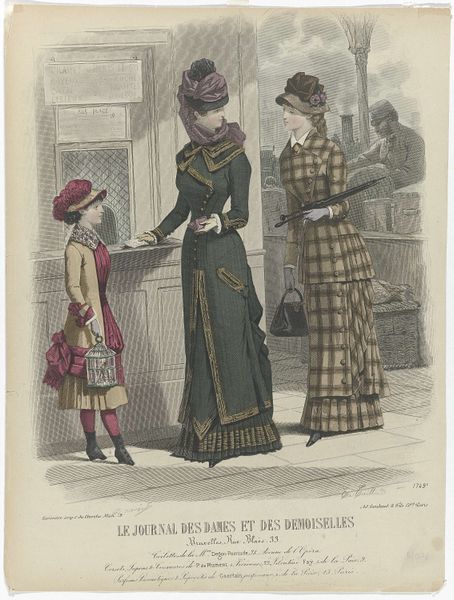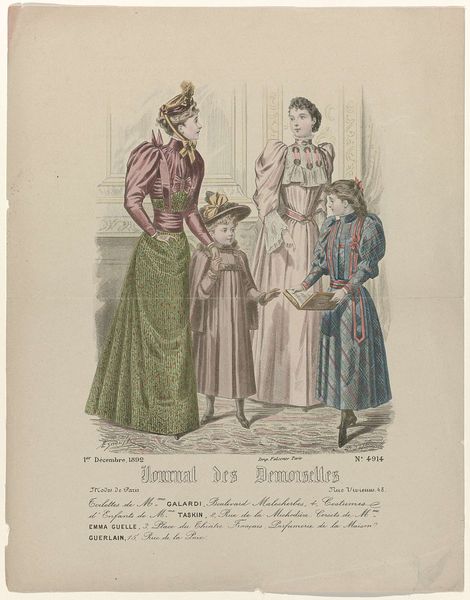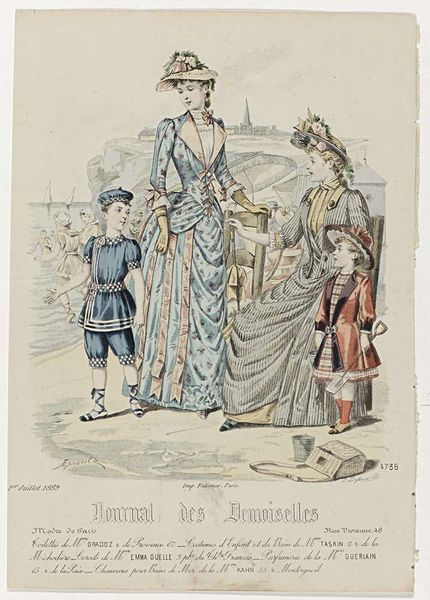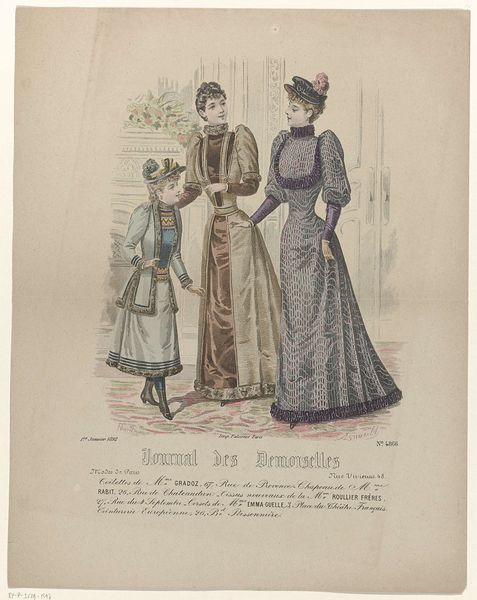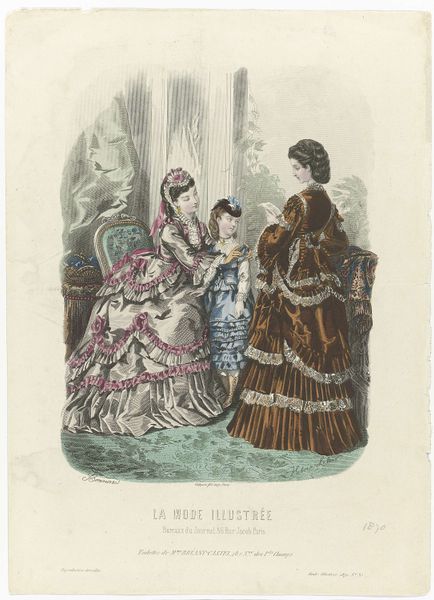
Dimensions: height 277 mm, width 183 mm
Copyright: Rijks Museum: Open Domain
Curator: This print, entitled "Journal des Demoiselles, 1 Aoút 1881, No. 4323 : Toilettes des Magasins (...)," was created in 1881 by A. Lefrancq. It appears to be a watercolor illustration from a fashion magazine. Editor: Oh my, what a whirlwind of textures and patterns! The women and the child seem a bit stiff, posed perhaps? But those dresses… they’re explosions of ribbons and ruffles, like elaborate cakes waiting to be devoured. Curator: Indeed. Consider the historical context of this image: it reflects the rise of department stores and mass consumerism in the late 19th century, particularly concerning how women's identities were increasingly intertwined with fashion and social status. The print showcases the idealized image of women as consumers. Editor: So, these weren't just outfits; they were signals? The woman in grey especially strikes me – a commanding, almost melancholy figure. And the child…is she gazing up in wonder, or pleading? It's like a stage tableau, full of unspoken dramas. Curator: Precisely. We can read these "toilettes" as symbols of aspiration, yet also of confinement within societal expectations. The very name, "Journal des Demoiselles," highlights the targeted demographic: young, unmarried women navigating a complex social landscape. Think about the implications for women's economic and social independence, or the lack thereof. Editor: That’s fascinating. It really shifts the way I see it. What first seemed like a frilly, fanciful image is actually quite loaded. But those hats, though...I simply can’t decide if I love them or if they give me a chuckle. They’re wonderfully excessive! It's like they placed tiny edible flower arrangements directly on their heads. Curator: Well, consider how these "details" became not only part of fashion but symbols, class signifiers as you implied. They had specific makers and cultural meanings understood by its consumers. Editor: It all comes together – or perhaps unravels – to paint a fascinating picture. I mean, a watercolor, but also a portrait of a society teetering between tradition and transformation. A complicated painting really, beyond pretty clothes. Curator: It certainly gives us pause to reflect on the roles of fashion, art, and gender in shaping our perceptions. Editor: I'll certainly think twice before simply enjoying the beauty of ruffles. Thanks for that.
Comments
No comments
Be the first to comment and join the conversation on the ultimate creative platform.
